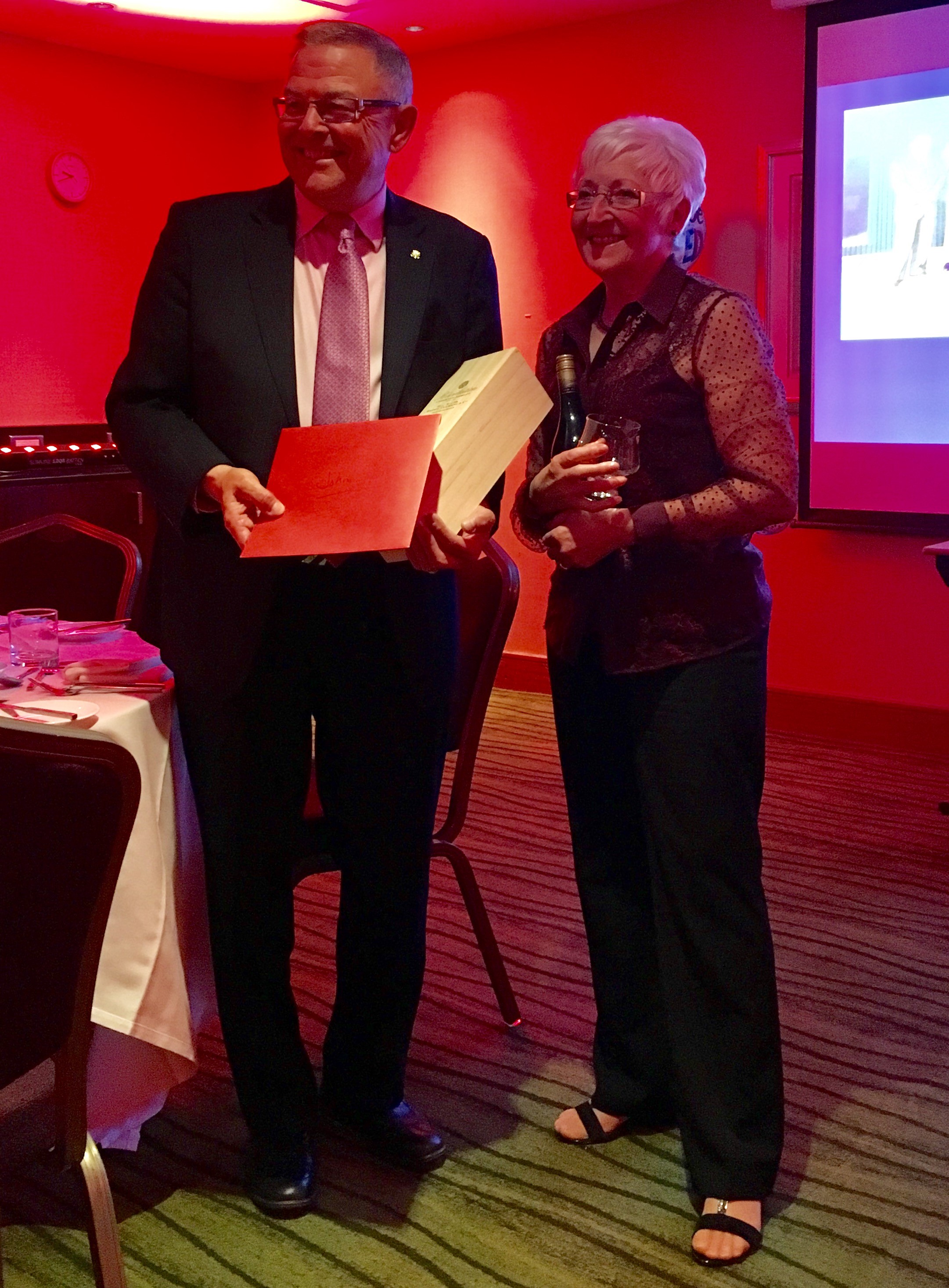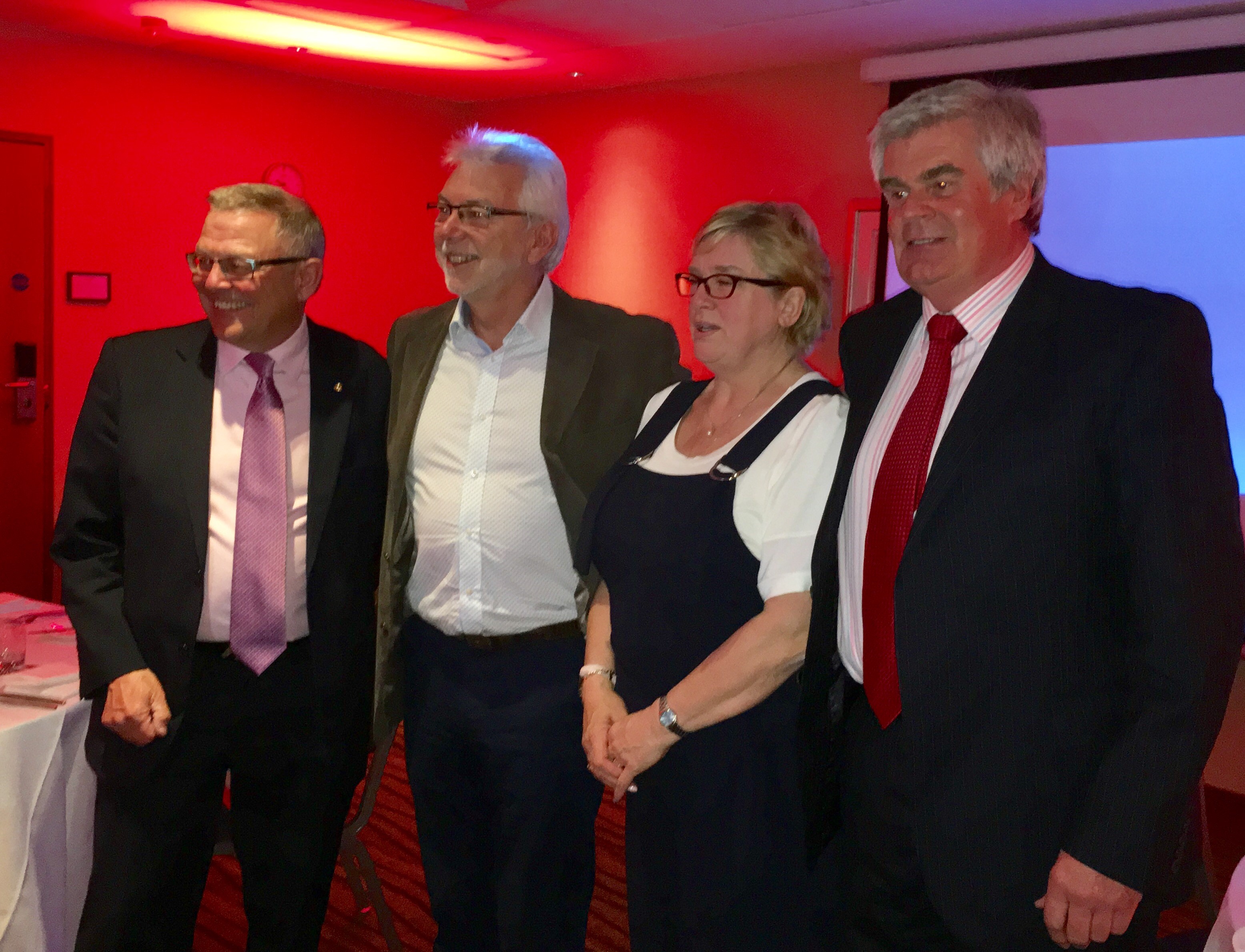55 years and still counting - a guest blog by John Bambery of BPIF Labels
After eight years as Chairman of BPIF labels I have decided to ease back from the industry. Having now completed fifty five years in the printing industry, starting out as an apprentice compositor back in 1962, I have witnessed change the like of which was never envisaged nor forecast. It was in the early 60s that companies first started to explore computerised film typesetting and offset litho which were, at the time, considered to be very futuristic.
I started out in the printing industry working on the local newspaper and, after completing my apprenticeship and achieving success in the City and Guilds examinations, embarked on a career in printing management. However, it was not until the early 80s that I became involved in self-adhesive label printing. In March 1983, along with a couple of colleagues, Lancastrian Labels was born. One of the things that struck me at the time was the reliance on the letterpress process for high quality label printing. This process had ceased to be of any significance in the mainstream printing industry, machinery was very expensive and to try and compete was difficult. While the Delta B100s could tackle fairly simple jobs, one had to have high speed UV rotary letterpress machinery to be efficient.
Fact-finding in Europe
In 1985, faced with customer demands but also a shortage of money, I decided to go on a fact-finding tour of Europe. During this tour, which was assisted by Webtron, Nilpeter and Mark Andy, I made some lasting friendships with our European peers and also established relationships with both VskE and FINAT. However, the one thing that struck me was why was flexo being used instead of letterpress for some quality work? In the UK flexography had a poor reputation for quality. It suffered from poor quality plates, inadequately pigmented inks and poor press design. Nevertheless, companies such as DuPont, Kodak, Asahi, Mark Andy and Nilpeter were investing heavily in the process.
Learning curves
So at the 1985 Labelexpo our first Nilpeter F200 was purchased and a very steep learning curve began. In total we purchased three 7 colour presses which were later followed by two Arsoma EM280s. Flexo benefited from the significant investment by repro houses, plate manufacturers, ink makers and machinery manufacturers, and it was not long before UV flexo started to take over from the water based alternative. As a company we won many awards for our quality. It required skill and dedication from both suppliers and the workforce to get to grips with the process. While the process was subjected to minor improvements, it basically remained unchanged and companies were progressing nicely. However, this industry has a history of embracing change and being a forerunner of implementing new ideas, and in the late 90s digital printing was starting to be discussed and the first HP Indigo presses were being installed. Companies were then having to make the same commitment to digital printing and show the same determination as we did to flexo back in the 80s.
Shifting patterns and pace of change
I retired from the  industry in 2006, leaving behind a company that was heavily reliant on the UV flexo process. When I was asked to come out of retirement to try and reinvigorate the special interest group of BPIF Labels, I began to notice shifting patterns. The digital process was taking off in a variety of directions, we had liquid toner and dry toner systems, and competition was growing from ink jet producers. Companies that were investing were being drawn in different directions, i.e. stay with existing technology or to try out a digital platform, but then which platform? Now, some eight years later, we are seeing hybrid machines and a host of digital machinery manufacturers. Labelexpo this year will be an exciting exhibition to attend. Already we have HP as the largest exhibitor, but there are many exhibiting companies that until fairly recently were not known in the label sector. Change is taking place at a phenomenal pace. Investment decisions are increasingly becoming more complex and 10 and 20-year life cycles for machinery purchases are no longer sustainable.
industry in 2006, leaving behind a company that was heavily reliant on the UV flexo process. When I was asked to come out of retirement to try and reinvigorate the special interest group of BPIF Labels, I began to notice shifting patterns. The digital process was taking off in a variety of directions, we had liquid toner and dry toner systems, and competition was growing from ink jet producers. Companies that were investing were being drawn in different directions, i.e. stay with existing technology or to try out a digital platform, but then which platform? Now, some eight years later, we are seeing hybrid machines and a host of digital machinery manufacturers. Labelexpo this year will be an exciting exhibition to attend. Already we have HP as the largest exhibitor, but there are many exhibiting companies that until fairly recently were not known in the label sector. Change is taking place at a phenomenal pace. Investment decisions are increasingly becoming more complex and 10 and 20-year life cycles for machinery purchases are no longer sustainable.
Friends, peers and knowledge transfer
 The self-adhesive industry is one of the barometers of the economy. If products are not being labelled, then products are not being sold. Nevertheless, it is an industry that has some dedicated people working within it. Whilst competition is still fierce, companies continue to find time to network with their peers and establish friendships, which makes the transfer of knowledge easier.
The self-adhesive industry is one of the barometers of the economy. If products are not being labelled, then products are not being sold. Nevertheless, it is an industry that has some dedicated people working within it. Whilst competition is still fierce, companies continue to find time to network with their peers and establish friendships, which makes the transfer of knowledge easier.
During the past 8 years, I have also seen the resurgence of the FINAT National Associations’ Board. This group, that represents companies in various European countries, meets once or twice a year to discuss topics that have a pan European theme. Ideas are exchanged and this enables National Associations to implement solutions that have been tried and tested in other countries. Examples of this are: the GMP on ink migration, the Best Practice Guide for narrow web printers/converters, recycling issues, the AWA cost price material matrix, an ISO standard for label specifications, and more recently the initiative that seeks to attract new entrants into the industry.
Goodbye
I have made many friends within the industry and I hope that I leave it in rude health. The challenges of today and the future are no different from those of the past. The only difference is that we are living in a ‘I want it now’ society, so there is far more pressure today compared to the somewhat gentle pace of thirty-five years ago. I therefore wish you all a very successful future in this wonderful industry of ours.”
John A. Bambery
Past Chairman BPIF labels






